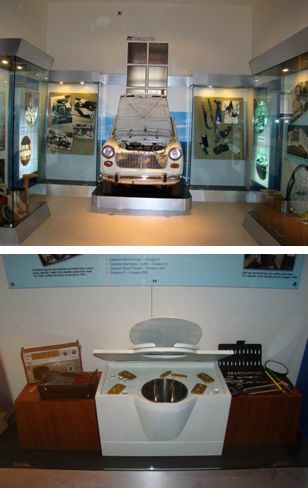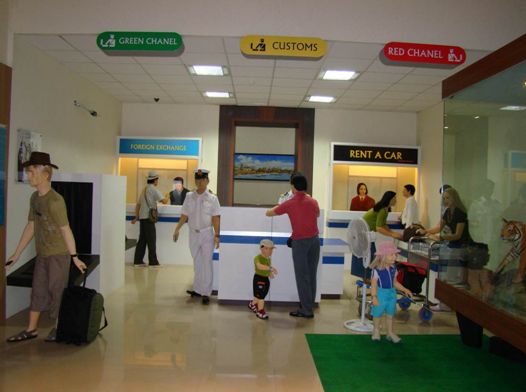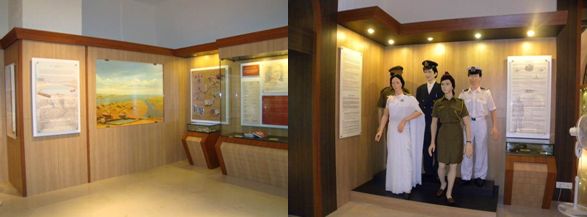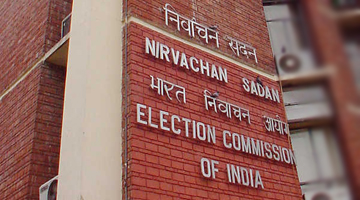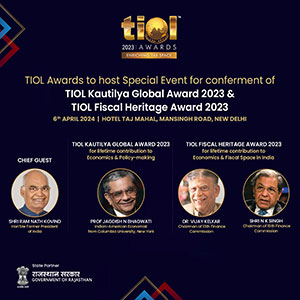Let's peep into Customs Museum at Goa
DECEMBER 22, 2014
By Sumit Dutt Majumder
A conference of senior executives of an organisation provides an opportunity for meeting of minds on all issues including those which are outside the scripted agenda. One such thing happened when an idea was born in the sidelines of a conference of Chief Commissioners of Customs at Mumbai in August 2003; it was felt by some of the participants that the Department of Customs and Central Excise, which has a long tradition of service to the people, should set up a good museum. The availability of the just vacated old heritage Customs building at Goa, popularly known as the Blue Building provided a readymade solution as for the site for the museum. Subrata Basu, Chief Commissioner of Customs and a Nature Sculptor in his own right took the lead in conceptualising the idea. R.K. Tiwari, the Chief Commissioner having jurisdiction over Goa Customs gave leadership in the process of implementation of the idea. Eventually the Central Board of Excise & Customs in its Board Meeting held on 27th of November, 2003 formally decided to set up the museum at the existing Blue Building.
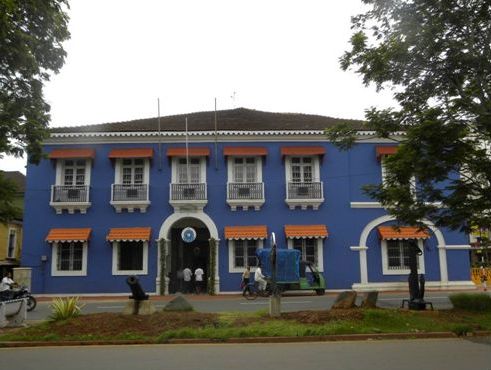 |
|
The Blue Building, Goa
|
The Blue Building itself is a museum-piece. The building was built by the Portuguese in 1834 at Panjim (now Panaji) by the side of the river Mandovi very near to its confluence with the sea. The word 'ALFANDEGA', which means 'Customs' in Portuguese, is embossed in the Building. Percival Noronha, the grand old man of Goa and founder member of the Indian Heritage Society, Goa while explaining the nuances of the architecture of the Building, advised on the structural aspects of the location and design of the proposed galleries inside the Building It is said that the Blue Building is so named after the trading of Indigo dye, which was a major commodity of export through this port in the nineteenth century. The colour of its facade also remained blue. The Blue Building remained the Customs Headquarters even after independence from the Portuguese in 1961 till 2002, when the Customs moved to a new place. This heritage building is a priceless inheritance from the Portuguese, and for the people including this author who worked in this building, it brings back fond memories with nostalgia.
While taking the momentous decision, the Central Board observed that the museum will promote the common man's awareness of our country's long history about the Customs and Central Excise Department through guided information, education and entertainment. The Board also saw many benefits flowing from this museum. It will 'enhance the public perception of the Customs and Excise Service taking note of its services to the Nation'; it will also promote common man's voluntary tax compliance and his assistance to the enforcement agencies to detect and prevent economic offences. Having taken the decision, the senior field officers across the country were asked to take personal interest in helping set up the museum by first of all collecting all possible exhibits. It was explained that the exhibits could range from old uniforms and badges, old documents of interest , medals, rifles, office furniture and office equipment to the seized antiques and idols and other smuggled goods of public interest. The other important decision was to form a Governing Body to set up the museum for realising the laid down objectives. The Governing Body was to be chaired by the jurisdictional Chief Commissioner and the Commissioner at Goa was to be the Member-Secretary. This author was privileged to be given the charge of Commissioner at Goa Customs around that time and be a part of the tremendous human efforts which ultimately led to the setting up of the museum-now known as ' Indian Customs and Central Excise Museum'.
After initiating preliminary work like collection of exhibits and interaction with the Public Works Department and the State Government agencies etc, the first meeting of the Governing Body was held in the Blue Building itself on the 26th of February, 2004. In an unconventional but effective way, the meeting started with the Governing Body taking a round of the Building which was to be converted into a museum. Ideas about location of different galleries and ancillary facilities started getting floated during this visit itself. A proposal from Subrata Basu about the types of galleries was also taken up for discussion. As the work progressed at a fast pace, the second meeting of the Governing Body was held on the 27th of April, 2004. A far reaching and rewarding decision in this meeting was to appoint Dr. S.S. Biswas, former Director General of National Museum, Delhi and an international authority on Museology the Technical Expert to advise on the museology aspects. His guidance and advice galvanised the museum work. Besides conservation of the collected exhibits, he helped in designing and locating the galleries. The road leading to the setting up of the museum was not always spread with roses; it was littered with thorns as well, which caused interruptions and delay at different stages. Dr. Biswas worked with the project right since May 2004 till early 2014, when both the phases of the Museum project were completed.
|
|
|
Dr. S. S. Biswas interacting with Mr. P. C. Jha then Chairman CBEC, Mr. S. Dutt Majumder and Mr. C. Mathur then Commissioner, Goa in the Museum
|
Another important work in this meeting was the review of a report on a chance visit by this author to the Customs Museum at Liverpool, U.K. The Liverpool Museum laid emphasis on the interactive displays inviting the visitor's participation, and it used advanced technology in audio and audio-visual displays. The aim of the Liverpool Museum displays was also to create better understanding of the difficulties and complications in the functioning of the Customs and Excise officers ,explained Ms. Karen Bradbury, the Curator. She took special care in explaining all aspects of setting up and maintenance of a Customs Museum. The Liverpool Museum followed a good collection and conservation management. The conservation was both active, through immediate treatment, cleaning, repairing etc, and preventive, through provision of appropriate environmental condition for storage and display. The Governing Body felt that these concepts and ideas could be kept in mind while designing the Goa Museum.
The Museum was set up in two phases. The work related to the Customs wing which covered the entire ground floor was completed in the first phase, after which the Museum was inaugurated in July 2009 by Shri Pranab Mukherjee, the then Finance Minister. In the second phase, the work was taken up in the upper floor of the two storied building. It covered the galleries on Central Excise, Narcotics and Chemical Laboratory. It also had the amenities like Multi Media Centre with Auditorium, Cafeteria etc. The work on second phase was completed in early 2014, and now the Museum in its final shape is there for the people to visit, learn and enjoy.
|
|
|
Inner Entrance view of the museum
|
When the visitors enter the Museum, they find the ticket counter and a cloak room to their left, and an old existing Chapel to their right. As they go further, they are led to the Museum galleries. It starts with the Introductory Gallery where photographs, maps, charts and write-ups are seen on both the sides.
|
|
|
Display in the Battle of Wits Gallery
|
The jewel in the crown of this Museum is a special gallery titled 'Battle of Wits'. While walking through this gallery, one would witness the sheer ingenuity of the human mind and the innovative methods of concealment. It tells us the exciting stories of India's smuggling history displaying the unusual items uncovered by keen-eyed Customs officials and the elaborate extent the smugglers went to in an effort to conceal the smuggled items. The exhibits also provide a glimpse of how gold, precious metals, currency notes, and other contrabands were smuggled in and out of the country. For instance, the exhibits show smugglers concealing gold, diamond and watches in shoe soles, cycle tyres, car-engines, toilet seat of the aircraft commode, walking sticks, audio speaker systems, cavities carved inside soap, and even in human body parts. The life size exhibits provide a fair idea of how the smugglers attempted to hoodwink Customs, and also explain the challenges faced by the men in uniform to check this menace. This gallery has been conceptualised to depict the never ending battle of wits between the smugglers and tax evaders at one end and the men on duty on the other.
|
|
|
Wild Life Diorama in the Seizure Gallery
|
The Seizure Gallery is just a door away. It is a delightful place which displays the items seized by Customs throughout the country over the last few decades. Lilian Fernandez, the Customs officer who was associated with the Museum since its inception till she retired, mentions how collecting the exhibits has been a labour of love with the Customs staff scanning through huge lists of seized goods and then putting items for conservation before storage. The items collected from all across India together with the replica of priceless seized antiques, now on display at other Indian Museums, make for a rich collection.
|
|
|
Gallery views of the Seizure Gallery
|
On display are antiques and religious idols, bronze images, stone sculptures, coins, replicas of Natraj and Amin Pillars etc.
Most valued item is perhaps, the gold gilded idol of Jambhala (Buddhist deity of opulence) smuggled from Nepal and the priceless hand written copy of the 'Aine-e- Akbari .' Besides, one will find varieties of arms and armours and gold beads. Some items are from the days of lucrative animal parts smuggling. An item which looks like an unusually shaped off-white brick is actually a five kilogram molar of an elephant. The Museum also presents a necklace like large shark-jaw, a rhino horn and two huge tusks forming an arch.
|
|
|
Airport Situation in the Seizure Gallery
|
The Customs Heritage Gallery traces through handcrafted models paintings, and panels the gradual evolution of Customs and moves back thousands of years to the period of Indus Valley Civilisation. An exhibit based on archaeological findings shows how large boats would enter into the water enclosures for loading and unloading of cargo at well-appointed dock in Lothal (Gujarat) where tax was collected from those boats. The Heritage Gallery also displays paintings of Customs Heritage buildings spread over the entire coast line form Gujarat to Bengal. The different Custom Houses at different places were under four colonial powers-British, Portuguese , French and Dutch. Such paintings are also seen on the walls by the side of the Staircase that leads to the first floor. These paintings depict the bygone era of the Customs, the influence of architectural style of different colonial powers and the set up of ports and other infrastructural facilities around the Custom Houses. Chittari Vijay Verma, Inspector of Central Excise and the in-house artist who took to painting as a hobby created all these wonderful thematic paintings. The Heritage Gallery also displays the replica of smuggled seals and gold beads of ancient period. Besides, the taxation system in different periods and the coastal and maritime history have been explained in well placed panels.
|
|
|
A model display of the Dandi March in the Central Excise Gallery (First Floor)
|
The Central Excise Gallery is subdivided based on two periods. The Gallery for the pre independence period has a diorama depicting Mahtama Gandhi's 'Dandi March' and violating the Salt Act. It also displays a sand model of the 'Salt Hedge' built by the British across the central part of the country to stop evasion of tax on Salt. The post- independence portion explains the evolution of excise on various items including tobacco, matchbox etc. The history of Excise from the regime of Physical Control to Self Removal Procedure is also explained through panels.
The Narcotics Gallery displays through models, pictures and panels a poppy field and the process of lancing and collection of opium juice. This gallery also tells the story of manufacture and smuggling of drugs. The chemical Laboratory Gallery in the same floor has very old testing equipment and technical books. It also displays how the chemicals and drugs are tested in the laboratory. The Museum has a corner devoted to the eminent sports persons of the Department and their achievements.
|
|
|
Narcotics Gallery (First Floor )
|
|
|
|
Visitors amenities leading to auditorium at the ground floor exit
|
Thus, the story of setting up the Indian Customs and Central Excise Museum at Goa is also a story of collective efforts of the officers and staff of the Customs and Central Excise Department over a period of eleven years from 2003 to 2014. A peep into the Museum would reveal that it not only speaks of the articles and objects but it has its identity too, and it speaks of the role of the Customs and Central Excise Department in the past. It brings out the task of the officers in not only revenue generation, but also protection of cultural and national heritage, protection of environment and wildlife, prevention of drug abuse and other cross border criminal activities, and many more. The Museum is indeed first of its kind in the country depicting the rich history of the Customs and Excise Department. It is hoped that the Goa Customs would now take it up with the State Tourism Department for listing this unique museum as a prominent tourist attraction place. The CBEC may also like to request the Ministry of Tourism at the Centre for similar action. The Indian Customs and Central Excise Museum (ICCEM) docs surely have the potential to be a 'must see' place for the tourists – both domestic as well as foreign.
(The Author is former Chairman, Central Board of Excise & Customs. He was associated with the setting up of the Museum since its inception till his retirement in October, 2011.)
|
(DISCLAIMER: The views expressed are strictly of the author and Taxindiaonline.com doesn't necessarily subscribe to the same. Taxindiaonline.com Pvt. Ltd. is not responsible or liable for any loss or damage caused to anyone due to any interpretation, error, omission in the articles being hosted on the sites)
|












